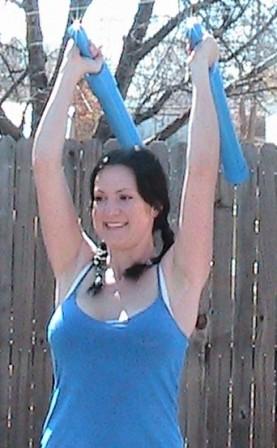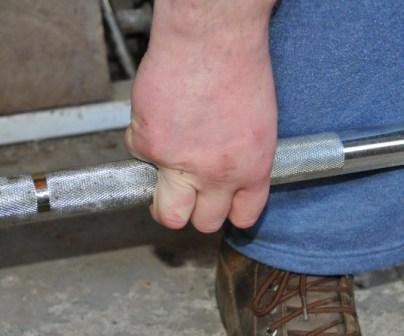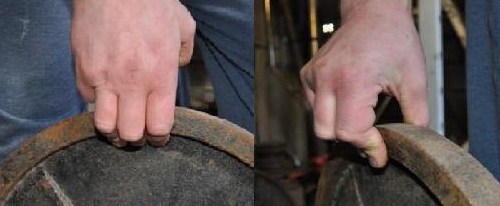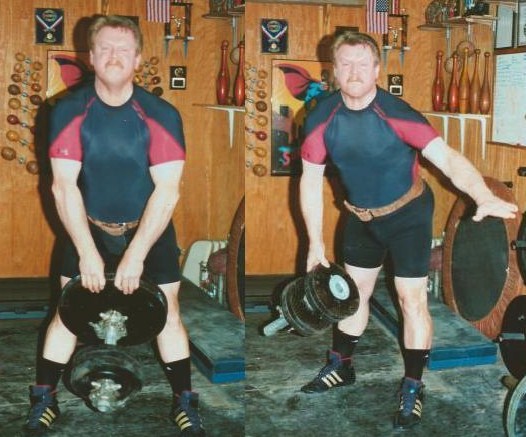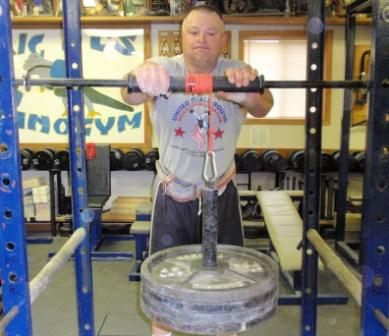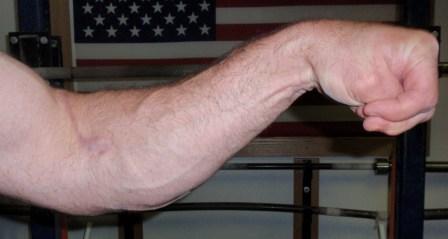Clubbells
by Jarrod Fobes
My grip got a lot stronger from training my shoulders. Last year after multiple back injuries, a couple of rotator cuff tears, and even tearing the cartilage between my ribs (twice!) I was becoming very interested in exploring different ways to train. That’s when I discovered clubbells.
For those that don’t know, clubbells originated in India and have been in use for thousands of years. They enjoyed tremendous popularity in the west during the Victorian era, but fell out of favor with the advent of modern weightlifting. In recent years, renowned coaches such as Scott Sonnon and Louie Simmons have done much to bring club swinging back into physical training. They are steadily growing in popularity with martial artists and other oddballs.
Being the thrifty sort, my clubs are made out of PVC filled with cement mix. I put together a simple circuit of shoulder exercises consisting of front circles, windmills, and curls with extension and got to work on building up my shoulders.
The particular exercises are best learned via video or in person, but a brief description is as follows. All exercises begin with the clubs hanging at your sides.
FRONT CIRCLES: Draw circles in the air in front of you with the clubs. Your right hand will move clockwise from your perspective, and your left will move counter-clockwise.
WINDMILLS: You are still describing circles, but the angle has changed. Your right hand will start lifting in front of your left hip. As it rises, it will move back to the right side and fall behind you. The motions should be similar to doing a backstroke.
CURLS WITH EXTENSIONS: This exercise is as much to give your shoulders a slight rest as it is to work the rest of your arms. Perform an explosive curl that ends with your elbows pointed up and the clubs lying against your back, points down. From here extend your arms and fully tighten your triceps. Lower your clubs to the starting position. If you want, you can also combine this exercise with a squat to warm up your legs as well.
I did this circuit about every other day, doing the circuit for two rounds at first. After successfully completing two consecutive circuits for two workouts in a row, I would add another round, eventually working up to six rounds. When you can consistently perform six rounds of this circuit, it’s time to build heavier clubs.
The first thing I noticed was a dull ache in my hands and forearms, even before my shoulders began to fatigue. The clubs were just plain hard to hold on to, so I decided to come up with a little forearm circuit as well to conclude my clubbell sessions with. This consists of front wrist lifts, rear wrist lifts, and finger crawls.
FRONT WRIST LIFTS: Keep your arms as straight as possible, and lift the clubs to at least parallel to the floor using only your wrists.
REAR WRIST LIFTS: These are the same as front wrist lifts, except you hold the clubs in a reverse grip. Your wrist has a greater range of motion working this way, so try to whack yourself in the triceps with the clubs on each rep. Make sure your arm is straight though this will isolate your forearms more.
FINGER CRAWLS: You know how when you get really fatigued even the most simple task can seem difficult? Welcome to finger crawls. Let the clubs hang at your sides, and walk your fingers up the club until you reach the tip. Keep the club perpendicular to the floor until you reach the tip, then let the club flip over and crawl back to the handle. Repeat this circuit until one of the exercises fails. Most likely, it will be the finger crawl that you bonk out on.
After about six weeks on these two circuits, I had added noticeable mass to each of my hands. Even better, I went from being able to do 15 consecutive reps on my Captain of Crush trainer gripper, to 26 consecutive reps. My grip is as strong as it’s ever been, and what’s better is that my shoulders have never been stronger or more stable. No USAWA lifts incorporate clubbells, but consider adding them to your routine to bump your hand strength up to the next level.
